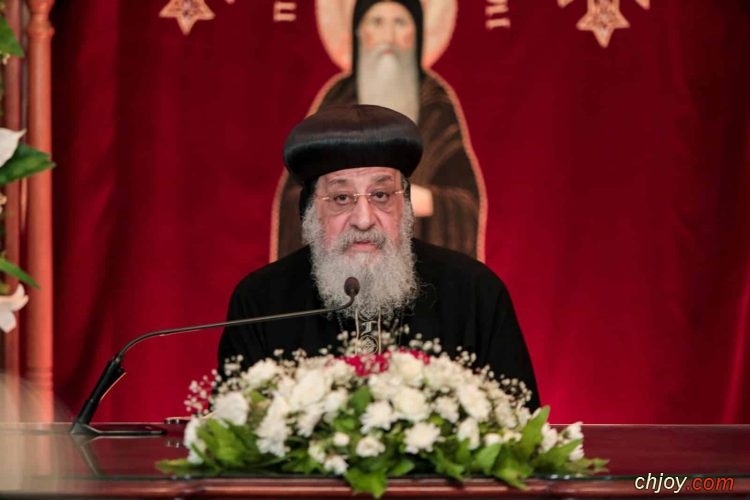
 |
 |
 |
 |
|
رقم المشاركة : ( 1 )
|
|||||||||||
|
|||||||||||
 H.H. Pope Tawadros II Stories of the Planted Tree Series” Part 6 in the Wednesday Meeting: Roots of the Coptic Orthodox Church H.H. Pope Tawadros II delivered his weekly sermon at the Wednesday meeting this evening from the LOGOS Center at the Papal Residence in St Bishoy’s Monastery, Wadi El-Natroun, as part of the Fifth LOGOS Coptic Youth Forum for the youth of the Coptic Orthodox Church from around the world. The sermon was broadcast on Christian satellite channels and via the online C.O.C. channel of the Church’s Media Center. His Holiness expressed his joy at meeting the youth during the days of the Forum, noting that the participants came from 44 countries, and that despite their diverse cultures and languages, the Forum gathers them together within the embrace of the Church, where they pray, study, engage in discussions, and gain valuable experiences. Continuing his series: “Stories of the Planted Tree”, Pope Tawadros spoke today on the topic: “Roots of the Coptic Orthodox Church.” He read the verse: “Stand in the ways and see, and ask for the old paths, where the good way is, and walk in it; then you will find rest for your souls” (Jeremiah 6:16). His Holiness explained that today’s topic is closely related to the Forum’s theme “Connected”, because the Coptic Orthodox roots connect us to our origin through the embrace of the Church (the tree). He identified five Coptic Orthodox roots: The Coptic Calendar -The Coptic year consists of 13 months, each containing 30 days, except for the month Nesi, which has 5 or 6 days. -The calendar represents the Church’s commemoration of feasts and fasts. For example, Global Coptic Day, commemorating the entry of the Lord Christ into Egypt is celebrated on June 1. -Egypt is the only country that has a field of study named after it; Egyptology, thus the Coptic calendar is the first root of the Church. The Coptic Language -A musical and spiritual language, whose first recorded verb is “Eshleel” meaning “pray.” -The language carries our culture, as seen in hymns like “Khen Efran.” -It is an ancient Egyptian language written with Greek letters, containing names of Egyptian places, such as “Shoubra” meaning “village.” -It preserves prayers, hymns, and liturgies. -The Church is the free space where one can encounter and preserve the Coptic language. The Hymns -Beautiful music expressed through words from the tongue and melody from the heart. -Hymns convey emotions, such as the hymn of “Golgotha.” -The shortest hymn and prayer is “Kyrie Eleison.” -Hymns bring beauty to worship. The Saints -The Church compiled the Synaxarium, which contains the biographies of the saints, celebrating them joyfully each day with the phrase, “On this day we commemorate…” -We name our children after saints—names with spiritual meanings, such as “Bishoy,” meaning “lofty”. -We offer doxologies and hold spiritual revivals in their honor. -The saints dwell in heaven, and through them we draw spiritual nourishment. -The iconostasis, which bears the icons of the saints, stands as though they are encouraging us to reach heaven. -Pope Tawadros encouraged the youth to name their future children after saints. Monasticism -A spiritual treasure for us. -It turns our hearts toward eternity and teaches us to live by the commandments. -The first monk was Saint Anthony the Great. -There are many monasteries across the world, with over 50 monasteries for monks and 15 convents for nuns in Egypt alone. -The Church imparts monastic teaching in every Divine Liturgy so that we may live in the Spirit, as in the phrase: “Do not love the world…” -The most beautiful aspect of the monastery is the Midnight Praises (Tasbeha). |
| أدوات الموضوع | |
| انواع عرض الموضوع | |
|